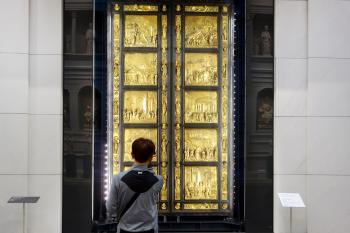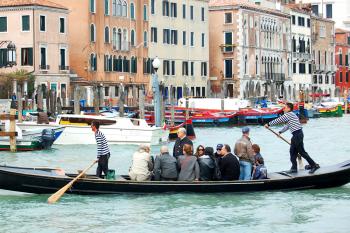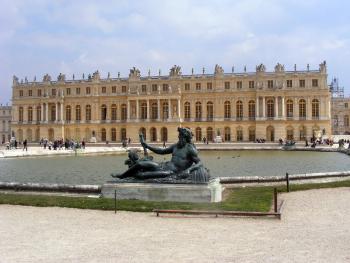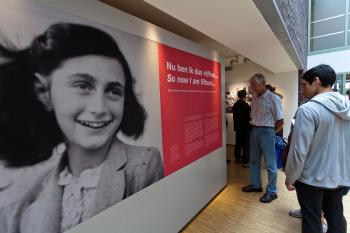Italy, France, Belgium & Netherlands in 2017
This item appears on page 53 of the May 2017 issue.
ITALY, with more culture, crowds and chaos per square kilometer than anywhere else in Europe, is most enjoyable when you're up to date on its sightseeing and infrastructure news.
• As in other European cities, Florence is beefing up security these days. Visiting some major museums — such as the Accademia (with Michelangelo’s “David”), Uffizi and Bargello — will require a little extra time and patience as metal detectors and x-ray machines for bags slow down lines.
Florence’s Duomo Museum, which reopened last year after an extensive renovation, has quickly become a top sight. Highlighted by original works that adorned the Duomo, Baptistery and Campanile — including Lorenzo Ghiberti’s remarkable “Gates of Paradise” bronze panels — the museum offers one of Italy’s great artistic experiences.
Climbing the Duomo’s iconic dome in Florence now requires reservations, which is a blessing considering the previous suffocating congestion and long lines. Get your appointment for the climb either online (www.museumflorence.com) or at the ticket office.
The museum and dome climb are covered by the same €15 combo-ticket, which also includes visits to the Baptistery, Campanile and Santa Reparata crypt. However, the combo-ticket is not necessary for travelers who buy the Firenze Card, which covers all of these and lets you skip the massive ticket lines at most tourist sights.
• West of Florence, in nearby Pisa, renovations are under way at that city’s Duomo, the huge Pisan Romanesque cathedral with a famous leaning bell tower. Through 2018, the upper and front part of the Duomo interior will be covered by scaffolding, and the associated Duomo Museum will be closed for renovation.
For travelers flying into or out of Pisa, the new “Pisa Mover” train offers an easy 8-minute connection from the Galileo Galilei Airport to the main train station and leaves every 10 minutes. (This train station also has regular connections to the Cinque Terre, Florence and other points in Italy.)
• Rome is, as usual, in a state of flux, with changes to transportation and construction going on around town. The cute electric minibus number 116, which ran through the city’s medieval core from Ponte Vittorio Emanuele II to Campo de’ Fiori, has been discontinued.
At Termini train station, entry to the platforms is now restricted to ticket holders, though there are no metal detectors and lines are short. Airport access is now a bit easier and cheaper, as two new competitors — T.A.M. and Schiaffini — have started running buses between Termini station and Fiumicino, Rome’s main airport.
In and around the Roman Forum’s Basilica of Constantine, construction work on a new metro line will likely be visible for the next few years.
In northern Rome, Santa Susanna — home of the American Catholic Church in Rome — is closed for renovation, though you can still pick up tickets there for the papal audience, and Mass is being held in English daily in nearby churches.
Rome’s ancient sites are also getting a few tweaks. Outside the Colosseum, the crude costumed “gladiators” are now officially banned from posing for photos with tourists for money (though whether these photogenic bullies will actually be deterred remains to be seen).
And on Palatine Hill, the House of Augustus and House of Livia, the most intact of the hill’s ruins, are finally open to the public.
• Venice is still sinking, and, unfortunately, the MOSE Project — involving those underwater mobile gates that are supposed to close off Venice’s lagoon to protect the city against flooding — has been stalled by a corruption scandal. (Public works corruption… in Italy?)
Venice continues to bustle, of course, and visitors will be reassured to find a new first-aid station staffed by English-speaking doctors on St. Mark’s Square.
The number of traghetti (shuttle gondolas) that ferry locals and in-the-know visitors across the Grand Canal has been reduced from seven to only three: at the Fish Market near Rialto Bridge, at San Toma near the Frari Church and at Santa Maria del Giglio (not far from St. Mark’s Square). Just step in, hand the gondolier €2 (near $2.15) and enjoy the ride.
• The Cinque Terre’s five villages along the Italian Riviera, while still a delight to explore, are more crowded than ever. Cruise ships continue to dump their masses into the national park, congesting the towns and trails so much that no one can enjoy themselves. If cruising, stay away from these villages. If not cruising, enjoy them outside of cruise day-trip hours.
• Vernazza, my favorite Cinque Terre town, now has its own summer opera series (Wednesday and Friday nights, April through October). Twice a week, a big-name maestro from Lucca brings talented singers there to perform at the small oratory tucked behind the town’s big church, which was beautifully restored for just this purpose.
•
• FRANCE is a country full of beloved sights. While recent terrorist events may have scared away some travelers, I return every year for a rewarding experience and feel perfectly safe.
Regrettably, France’s high profile and bold leadership in matters of pluralism have made it a target, so heightened concerns there about terrorism have led to more safeguards. Travelers can expect a greater security presence and extra checkpoints at tourist-oriented sights.
• As usual, Paris is evolving. After a long closure, its Picasso Museum is spiffed up and welcoming more visitors than ever. A major renovation at the Rodin Museum has wrapped up, and the museum is fully open. Meanwhile, the Carnavalet Museum, which covers the tumultuous history of Paris, is closed for 2017 and beyond as it receives an overhaul.
A new addition to the Paris shopping scene is the Forum des Halles, a modern mall under a vast glass-and-steel canopy.
Old-timers remember Les Halles as Paris’ gigantic central produce market. Demolished in the 1970s, it was replaced with an underground shopping mall. Now the complex has been transformed into a modern shopping center and a massive underground transportation hub capped by a huge city park.
• The region around Paris is studded with grand châteaux. The grandest of these is Versailles, where the Queen’s Wing is closed for extensive renovation.
For cheap and efficient day-tripping to two other top châteaux — Vaux-le-Vicomte and Fontainebleau — visitors now can purchase a regional Mobilis ticket, which covers any travel within a day in the greater Paris region, including Métro rides to and from the train station plus round-trip train fare, as well as the bus connecting the Fontainebleau station to the château (but not the shuttle from Verneuil-l’Étang train station to Vaux-le-Vicomte).
• In Normandy, the D-Day Experience museum at St-Côme-du-Mont now gives visitors a chance to pretend they’re paratroopers and take a simulated (yet still thrilling) flight on a vintage Douglas C-47.
• In Verdun — another area famous for its battlefields — the Verdun Memorial Museum has reopened to mark the 100th anniversary of the WWI battle. Among its exhibits is a 1916 battlefield replica, visible through a glass floor and complete with mud, shells, trenches and military equipment.
• The big news for prehistoric art lovers is the opening of the International Center for Cave Art at Lascaux, highlighted by a brand-new replica cave that faithfully reproduces the reindeer, horse and bull paintings found in the original cave, all created with the same types of dyes, tools and techniques that predecessors used 15,000 years ago. Reservations are highly recommended.
• Finally, France continues to improve its transportation infrastructure. With the last link complete in its high-speed rail line, it’s just two hours from Paris to Strasbourg, the capital of the Alsace region in northeastern France.
For much cheaper (if slower) transit to other large cities in France as well as to London, Amsterdam and Brussels, OUIBUS offers convenient and comfortable bus service, with Wi-Fi and an English-speaking driver.
•
• In BELGIUM, France’s neighbor to the north, the capital city of Brussels has pedestrianized part of the Boulevard Anspach and surrounding streets, creating the second-largest car-free zone in Europe. Because of this, many bus routes have changed, and crosstown cabs take more time getting around the downtown core. Visitors should consider using the metro instead.
• About 10 miles south of Brussels, the new Memorial 1815 museum commemorates the Battle of Waterloo with a 3-D movie and high-tech displays, giving visitors an engaging and informative trip through the site of Napoleon’s crushing defeat.
•
Farther north, in the NETHERLANDS, Amsterdam is thriving. In fact, it’s getting so crowded with tourists that the mayor — concerned about the flood of cheese stores, chocolate shops and kitschy tourism changing the city into a kind of amusement park — recently decided to stop promoting the city, even recommending visitors consider Rotterdam or Delft instead.
To control crowds at the popular Anne Frank House, only people holding reservations can visit between the hours of 9 a.m. and 3:30 p.m. Tickets can be booked online exactly two months in advance… and should be; they sell out quickly.
Amsterdam’s fascinating and hidden “church in the attic,” the Amstelkring Museum, has a new entrance building. Visitors are greeted with a shop, restaurant and educational spaces before stepping into the 17th-century Catholic church, built secretly into a merchant’s hollowed-out home.
Rich in culture and history, all these countries are working hard to make their heritage both safe and enjoyable.
Rick Steves writes European travel guidebooks and hosts travel shows on public TV and radio. Contact Rick Steves’ Europe (Edmonds, WA; 425/771-8303, www.ricksteves.com).




